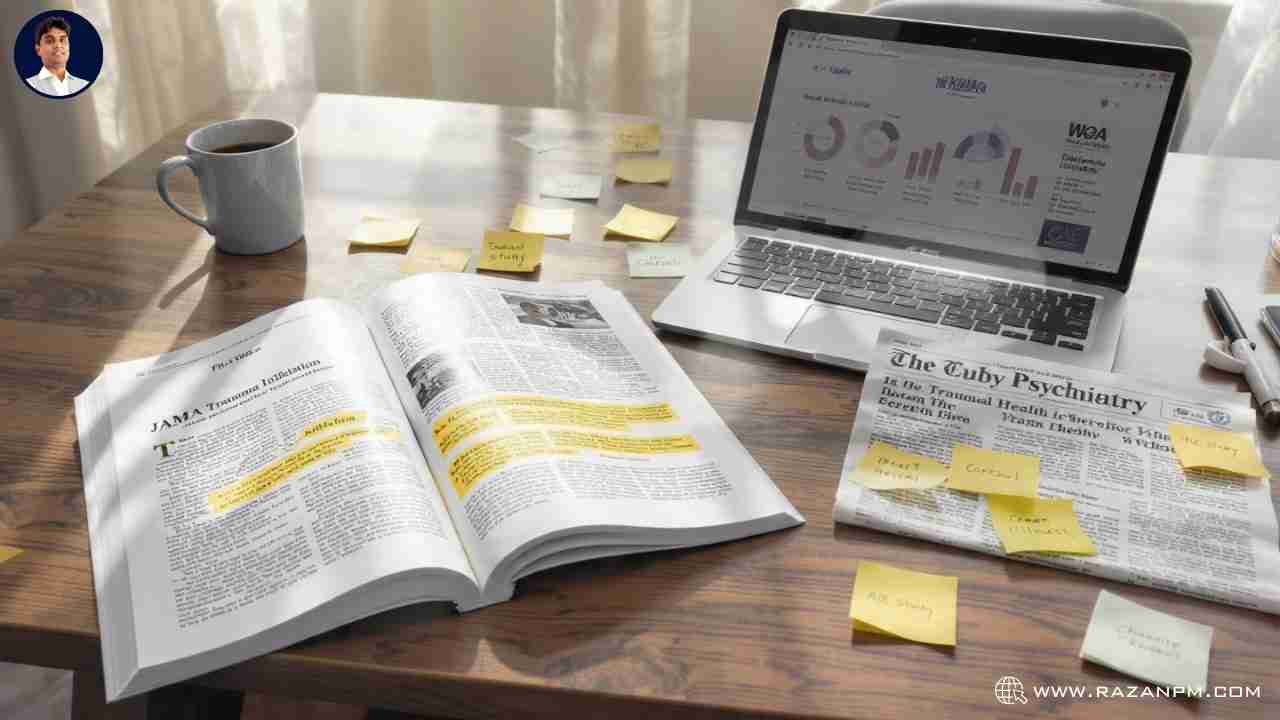Funny, right? But that’s how many of us deal with life. One small trigger — a delayed text, a harsh word, a memory from school — and boom! Our mind spirals into negative thoughts. We start imagining worst-case scenarios, our heart races, stomach churns, sleep vanishes.
“Yeh mujhe kya ho raha hai?” we ask — without realizing that maybe, this isn’t about today at all.
also read: 7 signs your addiction may be hidingdepression
As a Govt.Recognized Counsellor & Mind Healer, I’ve seen hundreds of clients who came in saying,
“Doctor, I’m anxious all the time.”
“I feel sad without reason.”
“Mujhe lagta hai main khud ko samajh hi nahi pa raha.”
And often, when we dig deeper, we discover — it’s not about their job, breakup, or traffic jams. It’s about unhealed memories from the past — emotional wounds that never got closure.
Trauma doesn’t always come from big events like abuse or accidents. Sometimes, it comes from small, repeated emotional injuries — being ignored, compared, criticized, or never feeling enough.
And here’s the kicker: your body remembers what your mind tries to forget.
That’s why someone who was shouted at as a child may now freeze during conflict.
Or someone who grew up in chaos may develop anxiety disorders, IBS, or chronic fatigue.
also read: 5 ways couples reignite love after along break

Then, maybe — your past self is still whispering through your present body.
Many people say, “That was years ago, I’ve moved on.”
But our nervous system doesn’t keep time like a clock — it keeps score like a diary.
When a situation today reminds it of old pain, it triggers the same fight, flight, or freeze reaction.
That’s how past trauma shapes your health today — not metaphorically, but biologically.
also read: how texting culture is changing genz relationships

Trauma often hides behind common everyday struggles.
Here are a few warning signs I often see in clients:
“Hey, there’s still something inside that needs healing.”
also read: the real psychology behind left onread anxiety
According to the DSM-5 (Diagnostic and Statistical Manual of Mental Disorders) and ICD-11 (International Classification of Diseases), trauma-related disorders fall under categories like:
What’s fascinating is how these mental conditions often have physical counterparts.
For instance:
In simple words — your brain rewires itself to stay on alert mode, long after the danger is gone.
also read: how disorders like insomnia fueldepression?

Modern research in psychoneuroimmunology (yes, it’s a mouthful!) shows how emotional pain impacts immunity, inflammation, and even chronic diseases.
So when your back aches or your chest tightens during stress — it’s not “just in your head.”
Your body is speaking your mind’s language.
also read: how isolation triggers illness anddepression together?
Years ago, I was counseling a young woman named Riya (name changed).
She had constant migraines and severe anxiety. Medical tests showed nothing abnormal.
During one session, she broke down remembering her father yelling at her as a child every time she made a mistake.
That one moment opened the door.
Her migraines weren’t random — they came whenever she felt judged or “not enough.”
We worked through her inner child wounds — through guided visualization, journaling, and breath therapy.
After months of inner healing, her migraines reduced drastically.
One day, she smiled and said,
“Doctor, for the first time in years, I slept without fear.”
That day, I realized something powerful — healing the past heals the body.
also read: how to stop the cycle of pain anddepression?

Here’s a small but powerful technique I often teach my clients —
called the “Body Check-In Practice.”
1. Find a quiet space. Sit comfortably.
2. Take a deep breath and close your eyes.
3. Scan your body from head to toe — notice where you feel tightness or heaviness.
4. Ask yourself gently, “What emotion could be here?”
(e.g., fear, guilt, shame, sadness)
5. Place your hand over that area and say:
“I hear you. I’m safe now.”
Repeat this for 5 minutes daily.
It sounds simple, but over time it builds body awareness and helps you reconnect to your emotions — instead of running from them.
This is where mind-body healing truly begins.
also read: what to do when i love you gets noreply?
Of course, this is just one gentle beginning.
True trauma healing involves guided techniques like Inner Child Work, Somatic Therapy, EMDR, or Cognitive Reprocessing — depending on your unique story.
Because healing trauma isn’t about “fixing yourself.”
It’s about reclaiming the parts of you that were silenced.
Your mind and body can heal — they just need a safe space and compassionate guidance.
also read: how fear of rejection kills realconnection?
If any part of this feels familiar — the fatigue, the fear, the emotional rollercoaster —
please know: You’re not broken. You’re just carrying old pain that deserves to be seen.
I’ve helped many individuals untangle their mind-body connection and reclaim peace through gentle, trauma-informed therapy.
If you’re ready to begin your healing journey,
🌸 You don’t have to figure it out alone. Book your consultation here
Let’s walk this path — slowly, safely, together.
👉 Begin Your Journey with a 1 on 1 Consultation
👉 Begin Your Journey with a 1 on 1 Consultation

Past trauma triggers long-term stress responses that affect your immune system, digestion, and hormones. Research shows that unresolved emotional pain can cause chronic fatigue, headaches, or even autoimmune conditions. Your body remembers the emotions your mind tries to ignore.
also read: why timing turns simple talks intobig arguments?
Yes. According to the DSM-5, childhood trauma often rewires the brain’s stress circuits, making adults more vulnerable to depression, anxiety, and emotional instability. Early emotional neglect or fear-based parenting can shape mental health patterns for life.
also read: how everyday pressure breaks yourmind?
If you feel emotionally reactive, exhausted without reason, or struggle with trust and self-worth, you might have unresolved trauma. The body often signals it through physical pain, sleep issues, or overthinking when old wounds are still active subconsciously.
also read: do voice notes kill realconversations?
Healing starts with awareness and guided therapy. Techniques like Inner Child Work, Somatic Therapy, and Mind-Body Reconnection Exercises help you process stored emotions. A certified Govt.Recognized Counsellor & Mind Healer can safely guide you through this process.
also read: how bias turns into deep depression?
Meditation and journaling are powerful self-healing tools, but they work best when combined with professional therapy. They help release surface-level emotions, while therapy uncovers deep-rooted patterns that require structured healing.
also read: how to tell if emotional separationhas already started?
Healing time varies for everyone. Some people see changes in a few months, while others take longer depending on the depth of trauma and their support system. The goal isn’t to “erase” the past but to transform pain into self-awareness and peace.
also read: why kind words createmisunderstanding?
